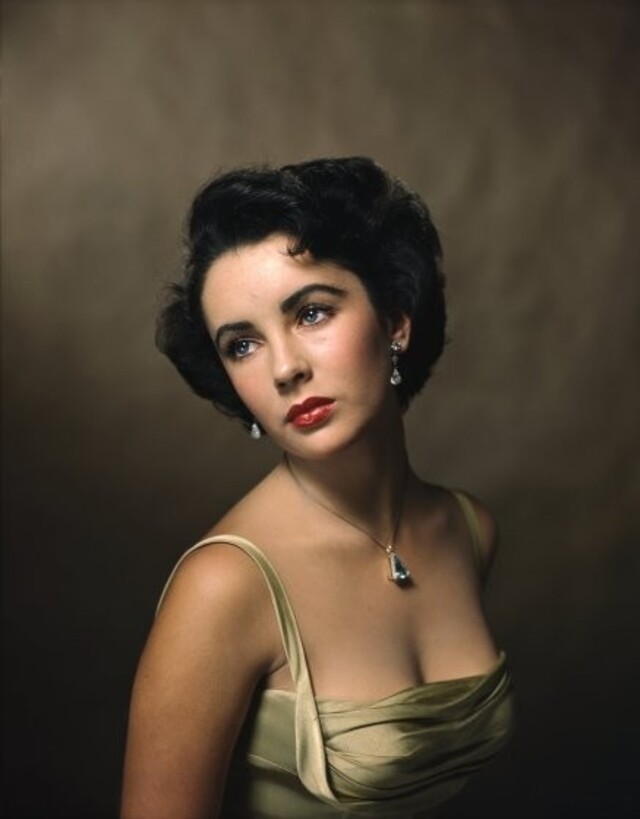Elizabeth Taylor was more than just a legendary actress—she was a cultural icon whose beauty, talent, and humanitarian work captivated the world for decades. From her unforgettable performances to her groundbreaking advocacy for social causes, Taylor’s legacy transcends the silver screen. With two Academy Awards, countless memorable roles, and a passionate dedication to philanthropy, she remains a symbol of resilience and elegance.
Early Life and Rise to Stardom
Born on February 27, 1932, in London, England, Elizabeth Rosemond Taylor was destined for greatness. Her American parents, Sara and Francis Taylor, relocated the family to Los Angeles at the onset of World War II. Taylor’s mother, a former stage actress, initially hesitated to allow her daughter into the film industry, but destiny had other plans.

Taylor’s first film, There’s One Born Every Minute (1942), marked the beginning of her illustrious career. However, it was her performance in National Velvet (1944) that launched her into stardom. Portraying a determined young girl who trains a horse to race, Taylor demonstrated a maturity and depth beyond her years, earning the admiration of audiences worldwide.
Video:
Transition to Leading Lady
As she grew older, Taylor seamlessly transitioned from a child star to a leading actress, captivating audiences with her versatility and grace. Her roles in films like Father of the Bride (1950) and A Place in the Sun (1951) showcased her ability to convey complex emotions, solidifying her status as a Hollywood powerhouse.
Taylor’s role in Giant (1956), alongside Rock Hudson and James Dean, further established her as a cinematic force. In the film, she played an East Coast woman navigating life in a tumultuous Texas ranching family. Critics lauded her nuanced portrayal, praising her ability to balance strength and vulnerability.

Her mature screen persona reached new heights with Cat on a Hot Tin Roof (1958) and Suddenly, Last Summer (1959). These Tennessee Williams adaptations highlighted her talent for portraying strong, passionate women who were unafraid to express their emotions.
Oscar Wins and the Richard Burton Era
Elizabeth Taylor’s first Academy Award came for her performance as a conflicted call girl in Butterfield 8 (1960). Although she later expressed her dislike for the film, her powerful portrayal resonated with audiences and critics alike.

The production of Cleopatra (1963) marked a turning point in her personal and professional life. While portraying the titular queen, Taylor met British actor Richard Burton. Their chemistry on-screen and off-screen was undeniable, sparking a love affair that captured headlines worldwide.
The couple married in 1964 and again in 1975, creating a partnership as tumultuous as it was passionate. Together, they starred in several films, including Who’s Afraid of Virginia Woolf? (1966), for which Taylor won her second Academy Award. Her portrayal of Martha, a sharp-tongued and deeply vulnerable woman, remains one of the most celebrated performances in cinematic history.
A Personal Life Under Scrutiny
Elizabeth Taylor’s personal life was as dramatic as her on-screen roles. Married eight times to seven men, her relationships were often the subject of public fascination. Her unions included hotel heir Conrad Hilton, actor Eddie Fisher, and U.S. Senator John Warner.

Her third husband, producer Mike Todd, was a source of immense joy and heartbreak. She described him as the love of her life, but their marriage was tragically cut short when he died in a plane crash. Taylor’s resilience in the face of personal loss only added to her enduring mystique.
Despite the intense scrutiny, Taylor lived unapologetically. She embraced her passions and lived with a fearlessness that inspired her fans.
A Legacy of Philanthropy and Business Acumen
Elizabeth Taylor’s influence extended far beyond Hollywood. She was a trailblazer in the fight against AIDS, co-founding the American Foundation for AIDS Research (amfAR) in 1985. Her advocacy was deeply personal, stemming from the loss of her friend and fellow actor Rock Hudson to the disease. In 1991, she established the Elizabeth Taylor AIDS Foundation, providing direct support to those affected by HIV/AIDS.

Her philanthropic efforts earned her numerous accolades, including the Jean Hersholt Humanitarian Award in 1993. Taylor’s unwavering dedication to this cause helped destigmatize the disease and brought attention to the urgent need for research and support.
In addition to her humanitarian work, Taylor proved herself a savvy businesswoman. Her perfume line, including the iconic White Diamonds, became one of the best-selling celebrity fragrances of all time. She also ventured into the jewelry industry, creating collections that reflected her timeless elegance.
Enduring Cultural Impact
Elizabeth Taylor’s influence on fashion, beauty, and film remains unparalleled. Her striking violet eyes, flawless style, and commanding screen presence have inspired countless artists and performers. As one of the first actresses to demand a million-dollar salary, she paved the way for women in Hollywood to advocate for their worth.
Beyond her career achievements, Taylor’s indomitable spirit and commitment to making a difference continue to resonate. She was a woman who embraced her flaws, celebrated her triumphs, and faced her challenges head-on.

Conclusion
Elizabeth Taylor’s life was a masterpiece of artistry, resilience, and compassion. From her unforgettable roles to her groundbreaking philanthropy, she left an indelible mark on the world. More than a Hollywood star, she was a beacon of strength and humanity, proving that a life lived with passion can inspire generations.
Taylor’s legacy shines as brightly today as it did during her lifetime, a testament to the enduring power of grace, talent, and heart.



